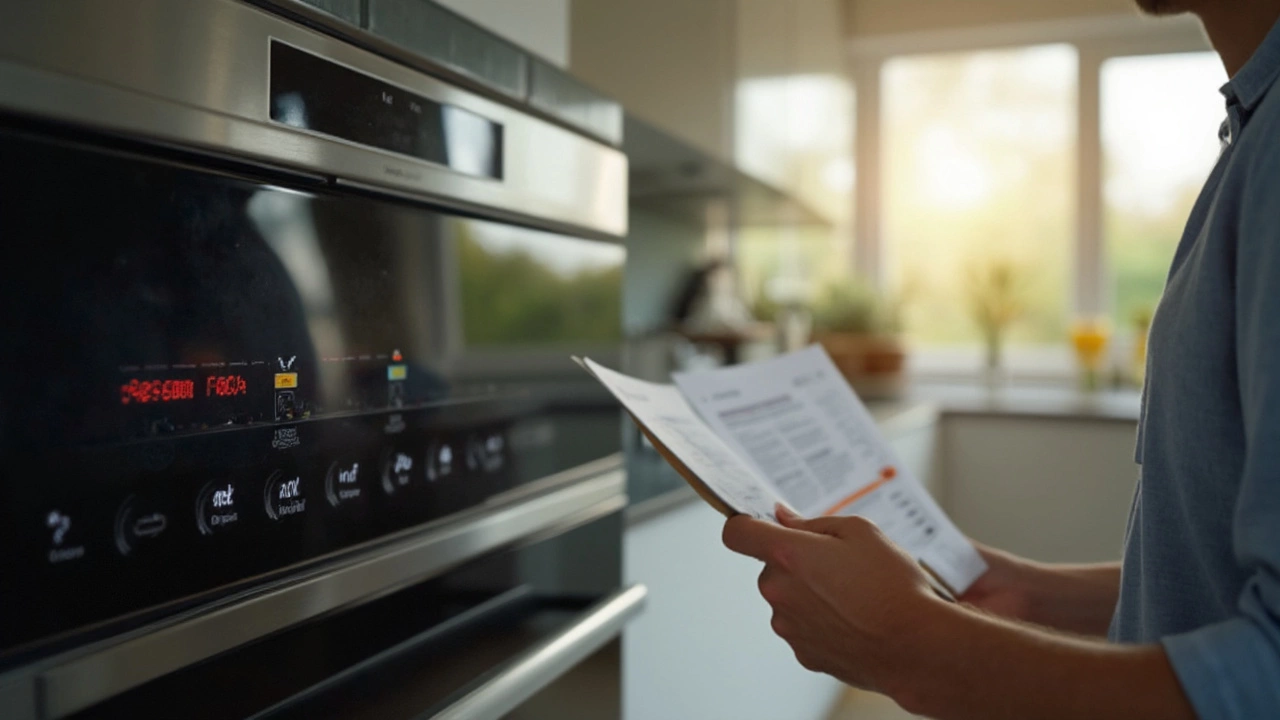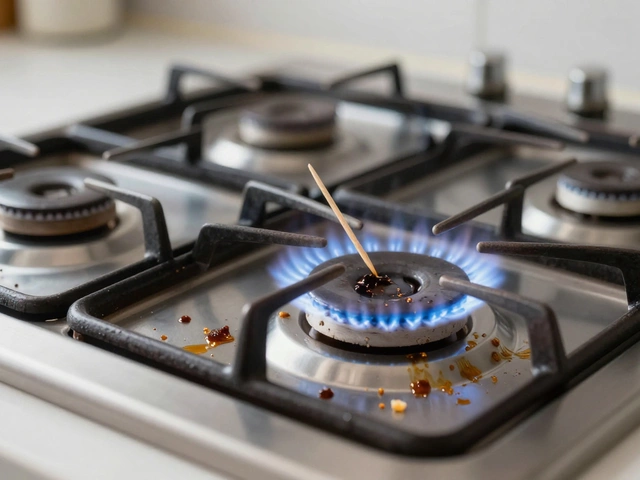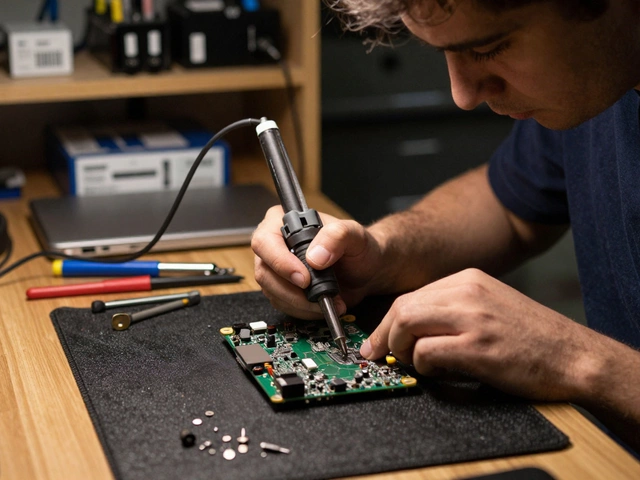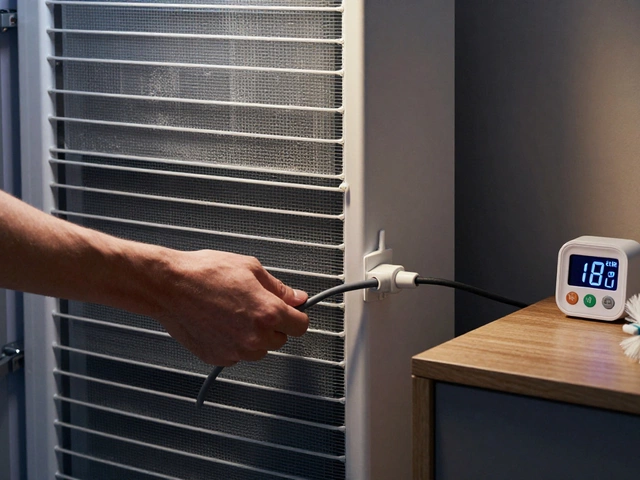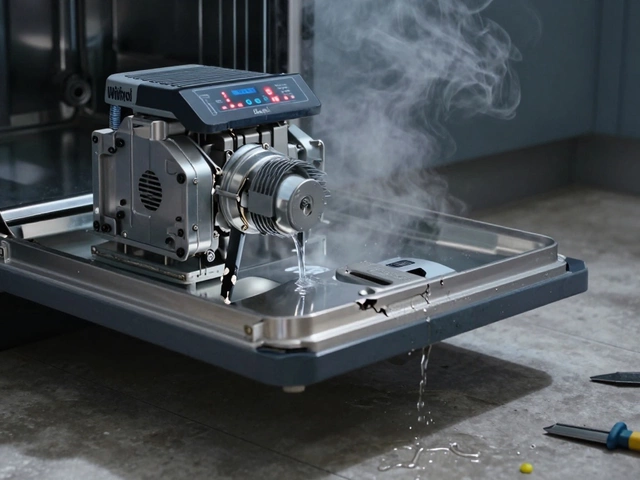Your oven isn’t turning on, or maybe it’s heating on its own random schedule. If you punch the controls and nothing happens, the control board might be the villain. This computer-like part is basically the oven’s brain. If it goes bad, things get weird fast: inconsistent temperatures, blinking error codes, or a control panel that’s just totally dead.
Here’s a tip a lot of people miss: before blaming your heating element or wiring, check for wacky control board behavior. Sometimes, the oven display flashes gibberish, buttons stop working, or the oven just won’t respond to anything. This is your control board crying for help.
Many folks end up replacing other parts first—like sensors or door latches—only to circle back to the control board. You can skip that money pit. If your oven randomly shuts off mid bake or totally ignores your settings, it’s probably that little board tucked behind the console.
- What Does the Oven Control Board Actually Do?
- Red Flags: Classic Signs Your Control Board Is Bad
- Quick DIY Checks Before You Panic
- Common Mistakes: When It’s NOT the Control Board
- Next Steps: What to Do If It Really Is Bad
- Pro Tips to Avoid Future Control Board Drama
What Does the Oven Control Board Actually Do?
This small part is a big deal. The oven control board is the switchboard operator for your oven. It takes all your button presses—like baking at 350° or flipping on the broiler—and makes those things happen by sending power to the right components.
Here’s what it handles every time you cook:
- Turns heating elements on and off to hit the temperature you set
- Manages the timer, clock, and display functions
- Tells the oven fan when to run, especially in convection models
- Sends power to the oven light and door lock during self-clean cycles
- Reads input from your oven’s buttons or touchscreen and reacts
The board is kind of like a tiny computer. It has its own little processor, memory, and relays. In fact, when you see error codes like F1, F3, or F9 on the display, it usually means the control board's gotten buggy or has stopped talking to one of the oven’s parts.
To give you an idea of what’s going on behind the scenes, check out this quick data snapshot for a typical electric oven:
| Function | Controlled By Board? |
|---|---|
| Heating elements (bake/broil) | Yes |
| Timer and clock | Yes |
| Oven light | Yes |
| Self-clean operation | Yes |
| Door lock (self-clean only) | Yes |
| Safety shutoff (overheat protection) | Yes |
Without a working oven control board, setting a temperature or even turning the oven on might become impossible. When this board goes out, most or all electric features stop cold, and everything else is just dead weight. That’s why it’s usually the first thing a repair tech checks if your display is dead or your oven ignores your settings.
Red Flags: Classic Signs Your Control Board Is Bad
If your oven is acting up, certain warning signs scream control board trouble. You don't always need a multimeter to spot these—they're usually pretty obvious if you know what to watch for.
- Oven control board buttons don’t respond or the digital display is blank—even after you reset the breaker.
- The screen flashes weird error codes you’ve never seen before, like F1 or E2. Those aren’t just random—manufacturers use them to signal control board faults.
- Temperature settings are a mess. Maybe you set it to 350°F, but it jumps to 425°F on its own, or drops below 200°F for no reason. If your cookies come out burnt one day and raw the next, the board probably isn’t sending the right instructions.
- The oven powers on and then shuts off by itself in the middle of cooking. Sometimes it restarts, other times it just stays dead.
- The oven light, fan, or other functions keep running even when the oven should be off. This usually means the control board relays are stuck.
- You hear constant clicking, see the oven controls flickering, or notice random beeping. These are all clues the circuit board is glitching out.
Most ovens aren’t shy when their brain is fried. If you see these red flags, there’s a good chance you don’t have a bad heating element or temperature sensor—it’s probably the control board itself.
Quick DIY Checks Before You Panic
Don’t call for a new oven control board just yet. There are some quick checks you can handle yourself, and you don’t need fancy tools either. Start simple—sometimes, it’s not the board at all, but a power or settings issue making it look dead.
- Power Check: Make sure your oven is plugged in tight. If it’s hardwired, check the breaker box. Flipped breakers are crazy common and can make the oven look totally dead.
- Reset Test: Unplug the oven or flip the breaker off for 5 minutes, then power it up. Lots of models will reset after a short power cycle. If the display or controls spring back to life, your board’s probably fine.
- Inspect for Error Codes: Look for blinking codes or weird messages on the display. Write down exactly what it shows. Many brands have code charts online that can point right to a control board problem.
- Button Test: Stand at your oven and press each button or touchpad spot. If only certain buttons work (or none), the issue might be with the control itself or even the faceplate—not always the board deep inside.
- Look and Listen: Open the oven. Do you hear relays softly clicking when you press bake or broil? No clicks, no beeps? Dead silence means the board’s not even trying to do its job.
Check out this quick rundown of what symptoms usually point to the control board vs. something else:
| Symptom | Likely Cause |
|---|---|
| No display, no lights | Power issue, board problem, blown fuse |
| Buttons unresponsive | Control board, touchpad, faceplate issue |
| Error codes showing | Usually control board or sensor |
| Heats up but no temp control | Board or sensor |
| Random shut-offs | Board, thermostat, or power |
If you spot several symptoms at once—especially if a reset doesn’t work and power is solid—it’s time to move on to a deeper check. But if your oven wakes up after a power cycle or only some buttons are out, you might not need a new board after all.
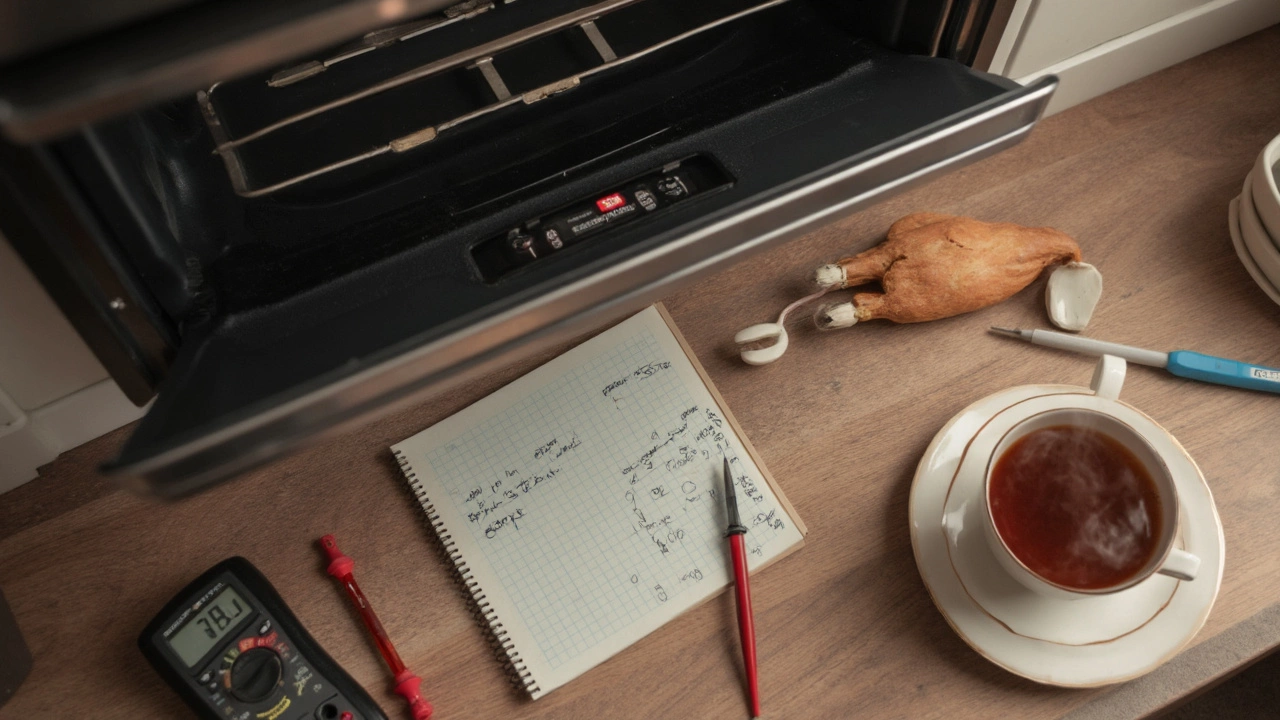
Common Mistakes: When It’s NOT the Control Board
Jumping to replace the oven control board is a classic move, but it’s often unnecessary. People blow cash on new boards when the real issue is something way simpler. Let’s break down the usual mix-ups.
The number one offender is a busted heating element. If your oven won’t heat, check both the bake and broil elements for burn marks, blisters, or visible breaks. No power there? Probably not the board. Another biggie: loose or burnt wires. Sometimes wires underneath work loose or connectors burn out from years of heat. This can cut off power or give you weird symptoms, but swapping the board won’t fix it.
Another oversight is the thermal fuse. If it blows (especially after a self-clean cycle), your oven could lose power entirely. A multimeter check can spot this. “About 30% of ovens reported for being ‘dead’ end up having a blown thermal fuse—not a failed control board,” says appliance technician Mark Williams.
“Before you blame the control board, try checking simple things you don’t need a toolbox for: breakers, wall outlet, and door latch switches. You’d be surprised how many times I find a tripped breaker or loose plug instead of a bad control board.”
Here are some common issues usually mistaken for fried control boards:
- Burnt heating element (can’t be fixed with a new board!)
- Tripped circuit breaker
- Unplugged or loose oven cord
- Blown thermal fuse
- Faulty temperature or door sensors
- Disconnected, burnt, or corroded wiring
This quick table shows the main culprits behind oven failures and how often they’re the true reason the oven’s dead:
| Failure Cause | Percentage of Cases |
|---|---|
| Heating Element Burnt Out | 40% |
| Blown Thermal Fuse | 30% |
| Circuit Breaker Tripped | 15% |
| Loose/Disconnected Wiring | 10% |
| Actual Control Board Failure | 5% |
So before you shell out for a new board, run through these quick checks. It’s usually something smaller—and way cheaper to fix.
Next Steps: What to Do If It Really Is Bad
Alright, so you’ve figured out your oven’s control board has called it quits. Here’s what you should do next so you’re not throwing time or money out the window.
First up: check your warranty. A surprising number of ovens still have coverage for control board replacements, especially if the unit is under five years old. Major brands like GE, Whirlpool, and Samsung are known for offering parts coverage up to a certain point, so dig up that paperwork before pulling out your wallet.
If you’re out of warranty, you’ll want to replace the control board. You can do this yourself if you’re comfortable using a screwdriver and following a YouTube video. Otherwise, calling a professional makes sense. Here’s a breakdown of what you’re looking at cost-wise:
| Step | DIY Cost (USD) | Pro Service Cost (USD) |
|---|---|---|
| Control board part | $110–$250 | Included in overall price |
| Labor (if hiring) | $0 | $120–$300 |
| Total Estimated Cost | $110–$250 | $230–$500 |
If you go the DIY route, unplug the oven and shut off the breaker before you even think about touching the wires. Oven control boards are usually tucked away behind the main control panel, held in place by a few screws and some wire harness connections. Snap some photos before you disconnect things — it’ll save you big headaches during reassembly.
Oven control board replacements are pretty straightforward, but always compare the new part to the old one before installing. If the numbers or plugs don’t match perfectly, don’t force it. Call the parts place or the manufacturer’s hotline.
Lastly, after swapping in the new board, do a quick test: restore power and run your oven through basic functions — bake, broil, timer, and any special features. Make sure everything is back to normal before celebrating.
- Check warranty first.
- Decide between DIY and calling a pro.
- Take clear photos of wiring.
- Compare new and old boards before installing.
- Test all functions when done.
If the job feels out of your league, don’t risk it. A messed-up install can fry the new board or damage other parts. Most techs can swap a board in under an hour, and you’ll avoid possible headaches with wiring mistakes.
Pro Tips to Avoid Future Control Board Drama
Most control boards don’t give up out of nowhere—they usually get wrecked by stuff like power surges, moisture, or just plain grime. Keeping yours going strong isn’t rocket science, but it does take a bit of common sense and some small habits.
- Unplug During Storms: Electricity spikes fry delicate electronics. If a thunderstorm is coming, unplug the oven or flip the kitchen breaker. You’d be surprised how many boards get toasted each year because of this.
- Wipe Down, Don’t Drench: Spraying cleaner straight onto the control panel is just asking for water to seep inside. Spray your cloth instead, then wipe everything gently. Even a little liquid in the wrong spot can short things out, and once a board is fried, no amount of cleaning will save it.
- Don’t Slam Oven Doors: A heavy door slam can jar wires loose or just shake up the fragile electronics inside. Shut it firmly, but there’s no need to take out your bad day on the oven.
- Install a Surge Protector: If your home’s wiring is older or you get power flickers often, use a surge suppressor dedicated for kitchen appliances. These aren’t expensive but can prevent a costly call to the repair guy.
- Check Your Vents: Blocked oven vents can cause moisture to build up inside the electronics. Make sure nothing is leaning against the vent openings, especially big pans or trays.
Here’s a quick look at why most boards fail, based on some appliance repair surveys last year:
| Cause of Failure | % of Cases |
|---|---|
| Power Surges | 44% |
| Moisture/Debris | 28% |
| Physical Shock | 17% |
| Old Age/Component Wear | 11% |
If you’re ever unsure about what’s normal, trust your nose and eyes. Weird burning smells, flickering lights, or a sticky control panel are all signs to keep an eye out for trouble. Remember, keeping your oven control board healthy saves you a ton of headaches (and dollars) in the long run.
